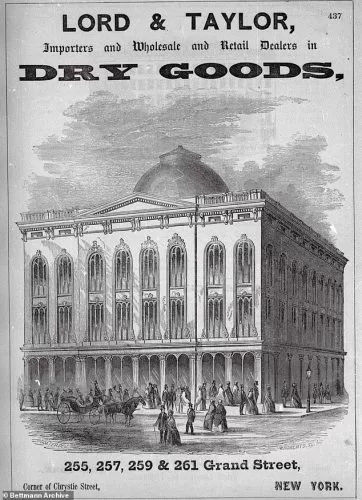The Fall of Lord & Taylor: A Symbol of Retail’s Struggles in a Post-Pandemic World
The year 2020 was a watershed moment for traditional retail, marked by a confluence of disruptive forces that permanently altered the landscape of consumer shopping. Among the hardest hit was Lord & Taylor, America’s oldest department store, which was forced to shut its doors for good after a lengthy struggle against the shifting retail environment. Founded in 1824, Lord & Taylor was once a beacon of American commerce and fashion, but in the face of a global pandemic, economic hardship, and evolving shopping habits, it couldn’t survive.
Lord & Taylor’s downfall is emblematic of broader trends that have reshaped the retail industry over the past several years. After being acquired by Le Tote Inc. in 2019, the historic brand filed for Chapter 11 bankruptcy in 2020, overwhelmed by the financial pressure of maintaining its iconic stores. The company initially hoped to keep 14 of its 38 locations open, but by 2021, it was clear that even that wouldn’t be enough. Despite its status as the first U.S. department store and its longstanding presence in the retail scene, Lord & Taylor couldn’t adapt quickly enough to the new reality of consumer shopping.
The Impact of COVID-19 on Retail
The COVID-19 pandemic was a devastating blow to traditional retailers, but it also accelerated trends that had been simmering for years. With lockdowns, store closures, and shifting consumer behaviors, many brands were forced to pivot to e-commerce almost overnight. Lord & Taylor, along with countless other iconic names like Brooks Brothers and J.C. Penney, found themselves unable to keep pace with the growing dominance of online shopping, a trend that had already been gaining momentum long before the pandemic.
While Lord & Taylor had an online presence, the company struggled to transition its historically brick-and-mortar model into a thriving digital business. As foot traffic to malls and department stores dwindled, it became apparent that the age-old strategy of relying on physical stores to drive revenue was no longer sustainable. This transition was especially difficult for heritage brands, whose loyal customer bases were often more accustomed to in-person shopping experiences rather than navigating online portals.
The Death of the Fifth Avenue Flagship
The decline of Lord & Taylor took an even more symbolic turn when it sold its legendary Fifth Avenue flagship store to WeWork in 2018, a move that shocked many industry observers. Originally an emblem of luxury and prestige, the flagship represented a major shift in the retail landscape, and selling it marked a turning point in the company’s financial trajectory. WeWork’s acquisition, which would later be absorbed by Amazon, underscored how rapidly the retail environment was changing, with companies no longer seeing brick-and-mortar locations as essential to their business models.
The Changing Retail Landscape
Lord & Taylor’s closure highlights a broader issue facing the retail industry: the collapse of legacy brands that were once cornerstones of the American shopping experience. Retail giants like Macy’s, Nordstrom, and Kohl’s are struggling to adapt, even as they pivot towards omnichannel strategies, offering both in-store and online shopping experiences. Meanwhile, e-commerce juggernauts like Amazon, Target, and Walmart have steadily absorbed market share, offering convenience and competitive prices that traditional retailers can’t always match.
The pandemic accelerated the ongoing shift from physical stores to digital shopping, but it also illuminated the difficulties faced by many long-established companies in adapting to this change. Retailers were forced to rethink their strategies, from how they manage inventory to how they engage with consumers through social media and targeted ads. The success stories of companies that emerged relatively unscathed — or even thrived — during the pandemic, like Warby Parker, Lululemon, and Casper, are proof that agility and innovation can win out in a disrupted market.
A Future of Retail Reinvention
As the retail world continues to shift, one question remains: What does the future of traditional retail look like? Will companies like Lord & Taylor, Brooks Brothers, and J.C. Penney ever regain their former glory, or is this the inevitable end of an era?
The future of retail is likely to see a further integration of online and offline shopping experiences. Retailers will need to embrace digital transformation, improving their e-commerce platforms and enhancing customer experience through advanced technology, personalization, and data-driven insights. But for legacy brands that have struggled to keep up, reinvention will be key. Those that can find ways to innovate and meet the evolving demands of modern consumers — whether through experiential retail, exclusive products, or seamless omnichannel strategies — may yet find a way to thrive in a new retail age.
Lord & Taylor’s closure is a reminder of how quickly the world can change, and how deeply the pandemic has reshaped the fabric of American retail. While its departure is a loss for the retail sector, it also signals an opportunity for new, more nimble players to take its place — and for the industry to reinvigorate itself in the face of ever-changing consumer demands.

















